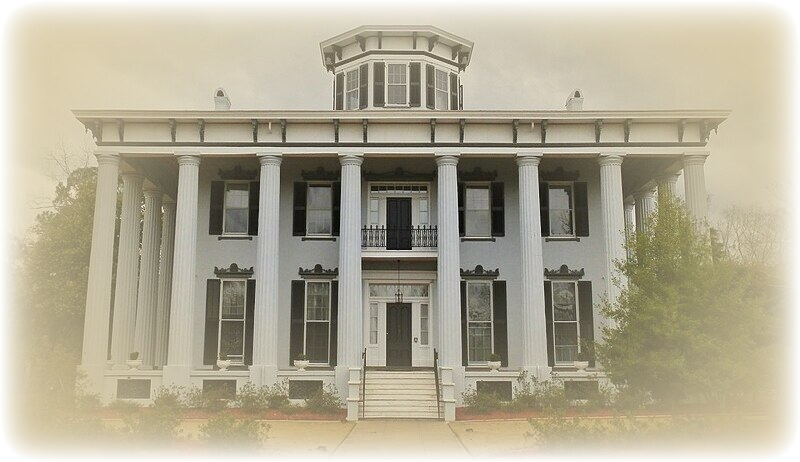Grey Columns – Tuskegee

When William Varner came to Macon County, Alabama, he decided to build a house that would embody the glory of southern wealth. Using his vast fortune and Harvard degree, he is said to have designed the house himself. The two-story, collonaded structure is crowned with an octagonal cupola, and the veranda is framed by eighteen Doric columns. He named it Grey Columns. Today, the house is the home of the Tuskegee University president, but it only remains to be enjoyed by the people of Tuskegee because of a quirk of fate. As we have seen throughout this book, the Union advance through southern Alabama played a critical role in the history of most of the buildings in the area, and Grey Columns is no exception.
When Union troops arrived in Tuskegee, they had every intention of burning Grey Columns to the ground. But when the commander of those troops entered the house, he found Ed Varner, scion of the Varner family, recuperating from wounds he had received in battle. In an unbelievable coincidence that bespeaks the brother-against-brother nature of the war, it turned out that the Union officer and Ed had been fraternity brothers while in college at Yale. The two men embraced, and the Union troops withdrew from the house, leaving it undisturbed and posting guards to ensure its protection. Because of the connection between the two men, much of Tuskegee was spared destruction as well.
While much of the South was laid to waste, Grey Columns attained a measure of fame in the years after the war. Such was the majesty of the home that the front gates were actually used in the movie Gone with the Wind. But that’s not the only reason Grey Columns is famous. The ghost that haunts its halls plays a part, as well.
They say that in the days well before the Civil War, the master of the house had a dalliance with a young slave girl. That it wasn’t uncommon at the time makes it no less abhorrent, but the story only gets worse. The girl fell pregnant. She knew the fate that awaited her child. Half-white did not mean half-free, and the baby would grow up as a slave unless something was done. She begged the master to grant freedom, if not to her then at least to the child. He refused. The poor girl felt that she had no choice. She didn’t want her child to face the same fate as her, so she killed herself.
They say that her spirit still lingers at Grey Columns, that it walks the halls of the resplendent mansion and that its soft cries and woeful moans still echo across the grounds. She is a reminder that while there was much beauty in the antebellum South, it covered a darkness that must never be forgotten.
SEE ALSO:
SOURCE:
Haunted Alabama Black Belt written by David Higdon and Brett Talley – Copyright © 2013 by David Higdon and Brett Talley – All rights reserved










